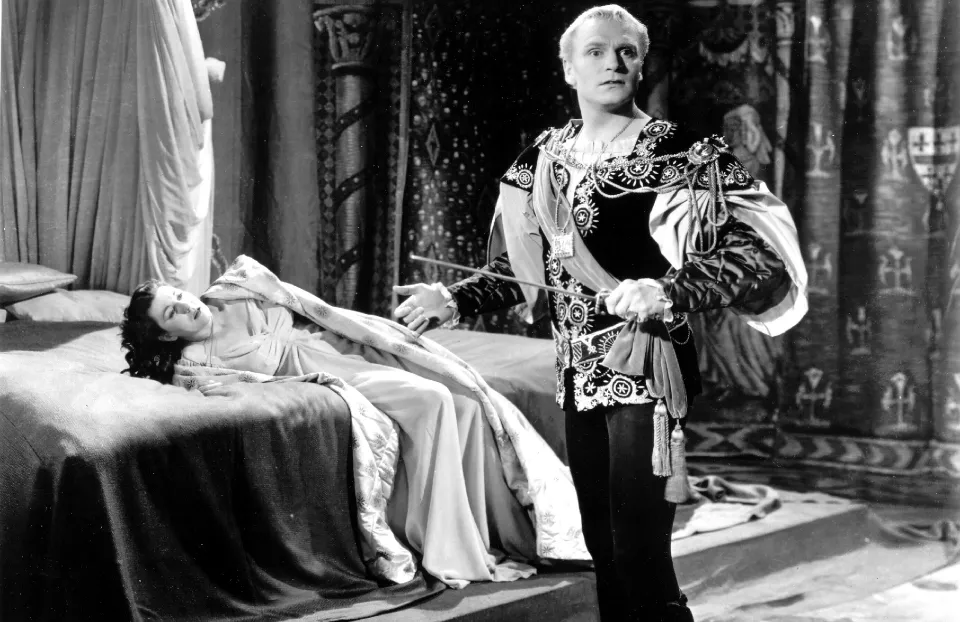If paradox is perplexing and conceit is confusing, then allusion is probably one of the most annoying literary devices out there.
What makes ‘allusion’ such an annoying device?
For starters, it assumes (or expects) readers to already know a reference that’s outside of the text at hand.
This may not be an issue for the voracious reader, but even the most widely-read soul is unlikely to remember every single Biblical parable, Greek myth, Norse god, or 80s Rock band song title.

The ideal reader of allusive works is someone who’s blessed with an encyclopaedic mind and a superhuman memory. But I suspect this is a type which constitutes less than 1% of the human population.
Still, for the ‘Internet Generation’, Google has proven to be our best weapon against elusive allusions. Nowadays, all it takes is a quick search for us to decipher Pound, Joyce or Nabokov’s intertextual puzzles.
If Doctor Faustus had technology back in the German Renaissance, perhaps he wouldn’t have had to sell his soul to the Devil. In our age, technology is the Devil – or God, depending on how one sees it.
Why use allusion in writing? Ask Joyce and Shakespeare.
Before we get into the definitional nitty-gritty of allusion, it’s worth considering why writers use allusion at all.
There’s no single answer to this, of course, but a facetious comment by James Joyce, the 20th century Irish writer whose works are notoriously difficult and allusive, offers some food for thought.
In response to the question ‘why does Finnegan’s Wake (arguably the hardest novel in the history of English Literature thus far) have so many allusions’, Joyce said he made the novel purposely difficult to ensure that English Professors would have a job in the next hundred years.

He’s most likely being sarcastic about the occupational hazard of literary academics reading too much into everything, but if Joyce’s riposte shows us anything, it’s the self-consciousness that underlies the use of allusion: it’s about the writer leaving a mark in the literary lineage, ensuring that one stays relevant in the wider cultural landscape, or achieving the stamp of approval from the erudite and the elite.
By the way, this ‘self-consciousness’ doesn’t necessarily carry a negative connotation; it’s about asserting one’s presence by establishing an intertextual, inter-generational ‘kinship’.

For instance, the reason that Shakespeare included references to Hyperion, Niobe and Hercules in Hamlet is very different from why Agard built his poem ‘Checking Out Me History’ upon colonialist and black historical references, like Lord Nelson at the Battle of Waterloo and Mary Seacole during the Crimean War.
In Shakespeare’s case, having attended grammar school in Renaissance England, the playwright was no stranger to Latin and Greek, and consequently, would have been well-versed in the myths chronicled by Homer, Virgil, Ovid etc.
In addition to drawing on his genteel education, he could also have wanted to emulate the “gentlemen poets” of his time, who were the main suppliers of plays when he first arrived in London from Stratford to make a name for himself.
These “gentlemen poets” were, according to Shakespearean scholar Stephen Greenblatt in his celebrated biography of the Bard – Will in the World, “men proud of their university degrees, their fine Latin and Greek”, who “drank for days and nights at a time and then, still half-drunk, threw something together for the printers or the players”.
This awareness probably triggered an ‘underdog’ desire in Shakespeare to be just as good, if not even better, at precisely what gives these men their leg up in life – the privilege of scholarly refinement in the form of “fine Latin and Greek”.
With Agard, on the other hand, there would be no poem without his basket of historical allusions, which sets up the ‘white-versus-black’ narrative skein that is so central to his message.
Psychological probing aside, let’s now clarify what allusion means.
What does allusion mean?
According to the Cambridge Dictionary, allusion is defined as:
Something that is said or written that is intended to make you think of a particular thing or person, or
A brief and indirect reference
To be honest, I don’t think either is good enough in the context of literary analysis. Instead, I’d go for the more specific definition provided by literarydevices.net:
Allusion is a brief and indirect reference to a person, place, thing or idea of historical, cultural, literary or political significance. It does not describe in detail the person or thing to which it refers. It is just a passing comment and the writer expects the reader to possess enough knowledge to spot the allusion and grasp its importance in a text.
The important phrase here is “historical, cultural, literary or political significance”.
What constitutes ‘significance’ is arguably subjective, and dependent on the reader’s own historical, cultural, literary and political exposure.
Geography and upbringing also matter: most Brits would find historical references to the Wars of the Roses or the House of Plantagenet familiar; most Chinese would be able to pick up on Confucian references to ren, yi, li, zhi; and most Americans would have at least heard of political references like Manifest Destiny and the Monroe Doctrine.
What they each take for granted as ‘common knowledge’, however, could be perfectly alien information to one another. In an increasingly globalised and digitalised world, such boundaries have since become less relevant, but the point remains that one’s native environment affects one’s allusive radar to a large extent.
What are the different types of allusion?
In truth, there are too many types of allusion to count. But in general, historical, political, cultural and intertextual allusions tend to be most common.
Under intertextual allusion fall three broad sub-categories, which are mythical, biblical and literary.
Mythical allusions include Greek, Roman, Nordic or other cultural folklore, whereas biblical allusions refer to any names, events or places mentioned in Judeo-Christian Scripture (i.e. The Holy Bible). Literary allusions point to any poem, novel, short story, or play outside of the text which contains the allusions.
To illustrate, here are a couple of examples:
Mythical allusion –
“John’s Bacchanalian lifestyle is his Achilles heel – he’s always getting drunk at the club!”
Explanation:
‘Bacchanalian’ is the adjective for Bacchanalia, which refers to the Roman festival of Bacchus, the Roman wine god (otherwise known as Dionysus in Greek).
Achilles is the Greek warrior whose mother Thetis dipped him in River Styx after he was born. This gave Achilles forces of invulnerability in all body parts save for the heel, which Thetis forgot to dip while holding onto it. Later in the Trojan War, Achilles would die from Paris’ poisoned arrow, which was shot right into his heel.
Biblical allusion –
“That slice of double chocolate cake is staring at me like a forbidden fruit, but I am determined not to go down Adam’s path on my diet journey.”
Explanation:
From the Genesis book in the Bible, the forbidden fruit refers to the apple of temptation which Adam and Eve – the first man and woman according to Scripture – ate against the warning of God, leading to the fall of Man.
Literary allusion –
“John and Jill’s relationship is pretty much the modern-day version of Romeo and Juliet; they’re basically star-crossed lovers with families that hate each other.”
Explanation:
Romeo and Juliet is a famous play by Shakespeare about two young people falling in love despite their families’ mutual animus.

An important note for English students: What should I do if I come across allusions I don’t know in unseen texts?
Usually, unseen passages on the GCSE, A-Levels and IB exams tend to come with glossaries or explanatory footnotes, so I wouldn’t be overly worried about being at a total loss when it comes to allusive references in test papers.
That said, there’s only so much a line of explanation or two can illuminate if we’re not at least familiar with the basics. Hence the importance of reading widely and consistently – knowledge accumulation is a gradual, immersive process.
To best prepare yourself for ‘unexpected’ allusions, then, I would recommend picking up a copy of Edith Hamilton’s Mythology: Timeless Tales of Gods and Heroes, and familiarising yourself with some of the most famous Bible stories. For a more pill-like, digestible alternative, you can refer to a glossary of mythical and biblical allusions here and here.
In the rest of this post, let’s read a Modernist poem which contains all three types of allusion – T. S. Eliot’s ‘The Love Song of J. Alfred Prufrock’. It’s not the happiest of verses, but there’s a strange allure to it that makes it a great timeless poem, and one that I return to time and time again.

But first, a quick note on Modernist poetry and why it’s so bloody difficult
Modernist literature (like Joyce’s Finnegans Wake and Eliot’s ‘Love Song of J Alfred Prufrock’ or The Waste Land) has a reputation for being ‘difficult’, much of which is well-deserved.
It’s just not the sort of literature you can ‘Netflix and chill’ with, and no cursory glance-through will grant a satisfactory understanding of the text.
Modernist poems and novels require laborious research, hard work and reading beyond the text you’re supposed to be reading.

In fact, reading one Modernist text usually means reading many texts from many different eras and movements; so if you think you’re reading a poem by T. S. Eliot, be prepared to read Shakespeare, Homer, Dante (and Milton and Marvell and Montaigne) as well.
i.e. Modernist texts are inherently intertextual, as much of a paradox as that sounds.
This is exactly the situation with ‘The Love Song of J. Alfred Prufrock’ (1915), which is chock full of literary, biblical and mythical allusions that will take anyone (who cares to bother) an entire afternoon (and more) to unpack, understand and savour.
What is ‘The Love Song of J. Alfred Prufrock’ about?
In a nutshell, the title ‘Love Song’ is a misnomer, because the poem isn’t a love song at all, at least not in the conventional sense.
It’s a philosophical meditation on the meaning(lessness) of life, the temptation of death, and the question of self-identity.
Our speaker, the eponymous J. Alfred Prufrock, is a bald, middle-aged man who can’t seem to make his mind up about anything.
Be it deciding if he should part his hair in the middle, or eat a peach, or commit suicide, he’s paralysed with self-consciousness and uncertainty.
This is a man who would like to imagine himself as someone more charismatic and courageous than he really is, but also tragically aware of that he isn’t all that interesting a person.

In truth, most people in the world aren’t all that interesting – but they fully accept this and so they get on with their lives carrying little to no emotional burden. Prufrock’s problem, however, is his fundamental inability to accept himself as a mundane speck in a complex world.
In Prufrock’s mind, he is too philosophical, too intellectual, too learned to be an average Joe, and yet, towards the end of his life, he finds himself forced to accept this hard-to-swallow reality.
Biblical allusion in ‘Love Song’ – “I am Lazarus”
This struggle that Prufrock feels between the mundane and the lofty, the human and the superhuman, is encapsulated in Eliot’s allusion to Lazarus of Bethany, which we must analyse in the context of the whole of Stanza 13.
And would it have been worth it, after all,
After the cups, the marmalade, the tea,
Among the porcelain, among some talk of you and me,
Would it have been worth while,
To have bitten off the matter with a smile,
To have squeezed the universe into a ball
To roll it towards some overwhelming question,
To say: “I am Lazarus, come from the dead,
Come back to tell you all, I shall tell you all”—
If one, settling a pillow by her head
Should say: “That is not what I meant at all;
That is not it, at all.”
Amidst domestic trinkets such as “cups”, “marmalade”, “tea”, “porcelain”, and the casual chit-chat of “some talk of you and me”, the reference to an extraordinary scriptural figure may seem odd at first read.
But the speaker, who has earlier claimed that “I am no prophet”, in fact desires the extraordinary. Everyday items and routine bore him, and this boredom forces him to consider an alternative identity which transcends that of mortal ordinariness.
Prufrock, then, considers the possibility of dying – but only so that he can return to Earth a unique, triumphant soul with news about the afterlife.
Like Lazarus of Bethany before the miracle of his raising, our speaker is just an ordinary man, but unlike Lazarus after the miracle, Prufrock does not experience a miraculous rebirth, and lacks the courage to find out if rebirths even possible (which would entail committing suicide).

Interestingly, he implies that he’s held back from becoming a ‘Lazarus’ by a ‘she’ who, “settling a pillow by her head”, says “This is not what I meant at all”, in effect trying to talk him out of thoughts of death. This suggests that domesticity, for all the predictable comfort it affords, shackles the philosophical soul to mediocrity.
Yet, one can’t help but suspect that cowardice is the bigger reason for Prufrock’s inability to take the plunge, despite his continuous entertaining of the idea. Indeed, all he does is “to wonder, ‘Do I dare?’ and ‘Do I dare?”. But where’s the action?

Literary allusion in ‘Love Song’ – “No! I am not Prince Hamlet”
Speaking of one’s inability to act, perhaps there’s no better representative than Shakespeare’s Hamlet, whose endless philosophising – to be or not to be, to die or to sleep etc. – cripples him from doing much else in the play.
Ironically, Prufrock denies that he is Hamlet, but what he lacks in royal stature, he more than makes up for in mental debate and wobbly resolve –
No! I am not Prince Hamlet, nor was meant to be;
Am an attendant lord, one that will do
To swell a progress, start a scene or two,
Advise the prince; no doubt, an easy tool,
Deferential, glad to be of use,
Politic, cautious, and meticulous;
Full of high sentence, but a bit obtuse;
At times, indeed, almost ridiculous—
Almost, at times, the Fool.
Here, Prufrock’s self-denigrating tone shows us a man who is all too self-aware, but reluctantly so. He knows that he’s too “ridiculous” to ever be “Prince Hamlet”, and that he’s not fated to have such an elevated status (“nor was meant to be”).
Unlike Hamlet, who vacillates between killing and not killing his uncle Claudius, Prufrock doesn’t even have a Claudius in his life to take revenge against – his existence is just not interesting or dramatic enough to begin with.

This leaves Prufrock stranded in both mind and identity, as he realises that he’s an ordinary man who doesn’t want to be ordinary, but must accept his reality as such. This gap between desire and reality, then, makes him seem “almost, at times, the Fool” – the Shakespearean stock character who amuses the audience, but can never be the hero.

Mythical allusion in ‘Love Song’ – “I have heard the mermaids singing”
Towards the end of the poem, Prufrock makes a cryptic reference to “mermaids singing, each to each”.
Shall I part my hair behind? Do I dare to eat a peach?
I shall wear white flannel trousers, and walk upon the beach.
I have heard the mermaids singing, each to each.I do not think that they will sing to me.
I have seen them riding seaward on the waves
Combing the white hair of the waves blown back
When the wind blows the water white and black.
We have lingered in the chambers of the sea
By sea-girls wreathed with seaweed red and brown
Till human voices wake us, and we drown.
The mermaid here is a Homeric allusion to the Sirens, which are half-bird, half-woman creatures whose beautiful singing voices often enticed sailors to their death. In Homer’s Odyssey, they tried to lure Odysseus with their song, but the soldier was too smart for their antics and nothing came of this endeavour.

It’s somewhat pathetic (and bathetic), then, that Prufrock should self-pityingly point out that “I do not think that they will sing to me” – one would imagine not being sung to by these dangerous creatures to be a good thing.
This observation, however, reveals a deep sense of inferiority on Prufrock’s part – is he too pedestrian to deserve the mermaids’ attention? Instead of feeling relieved that he’s not the target of deadly temptation, Prufrock sees this as a reflection of his utter insignificance, which is the result of his excessive attachment to a life that’s safe, but all too safe.
As such, he can only ever assume a voyeuristic distance on the land, as he watches the mermaids “riding seaward on the waves” without him ever being part of the action.
It is interesting, then, that the last line of the poem – “Till human voices wake us, and we drown” – enables Prufrock to finally ‘realise’ his perverse desire of death in a metaphor: he “drowns”, but only in a sea of “human voices”, as he’s pulled back into the mass of mundanity, back to square one, which is perhaps even worse than death itself.

There are many more allusions in ‘Love Song’, which can’t be covered in one post alone.
For example, there’s the Italian epigraph taken from Dante’s Inferno, and a cheeky rebuttal to Andrew Marvell’s comment on not having enough time in ‘To His Coy Mistress’ (“And indeed there will be time… And indeed there will be time”).
If you’re interested, I’d encourage you to dig up these allusions, and consider how the original reference is applied, challenged or ironised in the new text.
Got a question? Ask me in the comment section below!
PC: TIME.com, history.com

